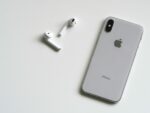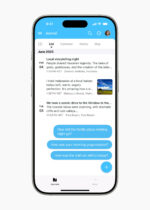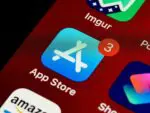To a smaller, greener future
The era of light computing has begun—for myself at least. Much of the time that I spend on the Internet happens on my iPhone. If I had an iPad, I would be using it to surf the Web during my free time.
My iMac is a terrific work machine, but I really don’t want to spend too much of my own time sitting at a desk. I suspect that I am not alone. Consumers have been buying more computing horsepower than they need for too long. Portable and less expensive hardware can get the job done just as well.
The trend away from the PC may also lead to a greener industry—devices consume less energy, and are often resold and refurbished. The PC won’t disappear over night, but its role is certainly being reduced. — David Worthington
The iBZZZZZzzzzzzzzZZZZZZzzzzz
From the “This Has Got to Be the Worst Idea EVER!” Department: an iTunes app that recreates the sound of the obnoxious vuvuzela, that ubiquitous horn being blown at the World Cup soccer matches in South Africa. People around the globe are complaining that the horns are noisy and bothersome, so what better way to respond to that criticism than to write an application that can emulate four different vuvuzela sounds?
Even its creator, ad agency Pereira & O’Dell, acknowledges in its announcement of the application: “Despite initiatives to ban the vuvuzela, it is the sound of World Cup 2010.” Yes, and despite several initiatives by parents, hungry babies still cry, yet I don’t see a free app recreating THAT sound!
Enough with the vuvuzelas already… The sounds of crowds cheering goals and showing their national pride—whatever nation they root for—is enough for me! — David Rubinstein
Crunching data from the crust
Is there a “new age” of analytical software on the horizon? HP seems to think so. Much related to a technology called the Internet of Things, Hewlett Packard Labs is working on a project called CeNSE: The Central Nervous System for the Earth. In a nutshell, the goal of CeNSE is to create a worldwide network of tiny sensors that in turn collect massive amounts of data and feedback to be used in different ways.
A common example HP uses is connecting thousands of these sensors to a large bridge, such as the San Francisco’s Golden Gate Bridge, and using the vibrations the sensors pick up to determine the bridge’s “health.” Engineers can then use the information for future projects and be alerted to any weaknesses in the infrastructure.
However cool this technology may be, it also beckons to a potentially major change in analytical software. In order to handle real-time data from thousands of sensors, analytical software will need to be able to crunch data at alarming rates and accurately as well. — Katie Serignese





